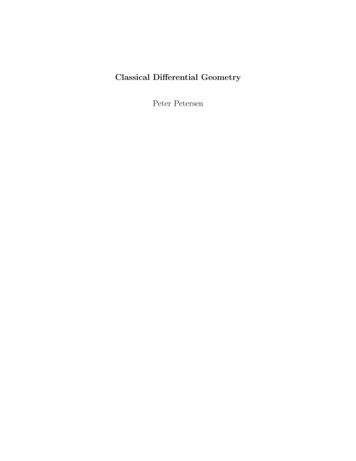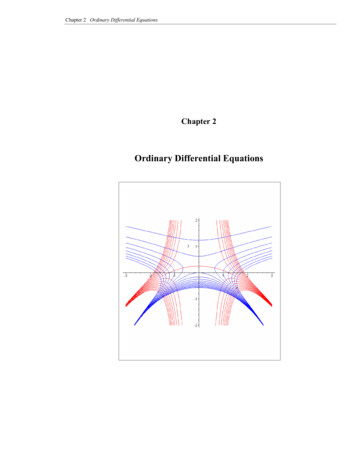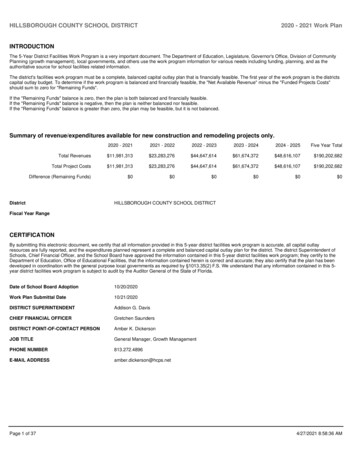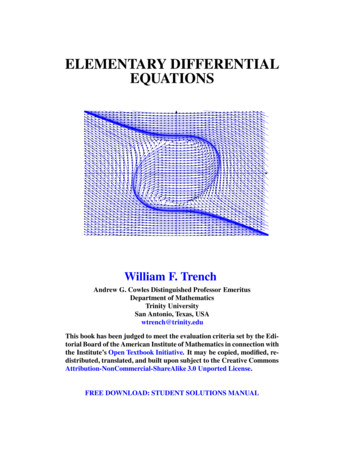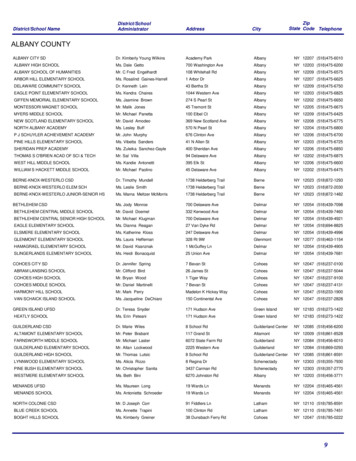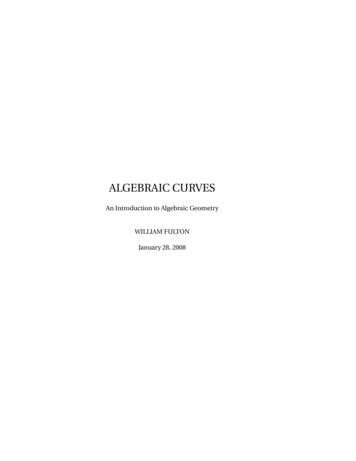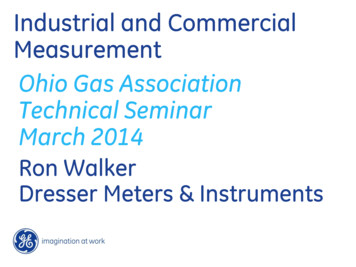
Transcription
Elementary Differential Geometry:Curves and SurfacesEdition 2008Martin RaussenD EPARTMENTOFM ATHEMATICAL S CIENCES , A ALBORG U NIVERSITYF REDRIK B AJERSVEJ 7G, DK – 9220 A ALBORG Ø ST , D ENMARK , 45 96 35 88 55E - MAIL : RAUSSEN @ MATH . AAU . DK
First of all, I would like to thank my colleague Lisbeth Fajstrup for many discussionabout these notes and for many of the drawings in this text.The VIDIGEO-project has provided interactive and dynamical software forillustrations of curves and associated objects which are used in the first chapters ofthese notes; the interactive versions are accessible atwww.math.aau.dk/ raussen/VIDIGEO/GEOLAB – or by clicking on the figures inthe electronic version of this text.The project was supported by Dansk Naturvidenskabscenter; the underlyingJava-software was programmed by Robert Sinclair, PhD.An example of how you can use the geometric laboratory is given in Sect. 2.5. Aprototype for graphical software with illustrations of material related to surfaces iscurrently developed by Martin Qvist, Aalborg University.
ContentsChapter 1. Plane and Space: Linear Algebra and Geometry1. Vectors and Products2. Description of Lines and Planes3. Orthogonal Projections, Distances and Angles4. Change of Coordinate Systems55132536Chapter 2. Curves in plane and space1. Vector functions in one variable2. Parametrized Curves3. Curvature4. Space Curves: Moving Frames and Torsion5. How to use the geometric laboratory - an example474750627892Chapter 3. Regular Surfaces1. Parametrizations of surfaces2. Measurement in curved coordinates: the 1. fundamental form3. Normal sections and normal curvature4. Normal and geodesic curvature; the second fundamental form5. Principal curvatures, Gaussian curvature, and Mean curvature6. Special surfaces7. The geometric labotatory for surfaces9595108118124131146157Index1593
CHAPTER 1Plane and Space: Linear Algebra and GeometryThe purpose of this course is the study of curves and surfaces, and those are, in general, curved. Nevertheless, our main tools to understand and analyze these curved objects are (tangent) lines and planes and the way those change along a curve, resp. surface.This is why we start with a brief chapter assembling prerequisites from linear geometryand algebra. Most or all of these will be known to the reader from elementary coursesand textbooks. We focus on geometric aspects of methods borrowed from linear algebra; proofs will only be included for those properties that are important for the futuredevelopment.1. Vectors and Products1.1. Vectors. Our models for plane and space use the Euclidean vector spaces R2 ,resp. R3 with coordinate systems {i, j}, resp. {i, j, k}. Hence, a plane vector x R2has a unique representation(1.1)x x1 i x2 j, in short x [ x1 , x2 ],while a space vector y R3 has a unique representation(1.2)y y1 i y2 j y3 k, in short y [y1 , y2 , y3 ].where x1 , x2 , y1 , y2 , x3 , y3 are real numbers. A special vector is the zero vector0 [0, 0] R2 , resp. 0 [0, 0, 0] R3 .With respect to the given coordinate system, the sum of two vectors x and y in R3 iscalculated componentwise:x y [ x1 , x2 , x3 ] [ y1 , y2 , y3 ] [ x1 y1 , x2 y2 , x3 y3 ].Similarly for the difference of two vectors.A vector x R3 may be multiplied with a real number (or scalar) a:ax [ ax1 , ax2 , ax3 ],a R.Together, these operations give rise to the following concepts:5
61. PLANE AND SPACE: LINEAR ALGEBRA AND GEOMETRYD EFINITION 1.1.(1) A vector w ax by, a, b R is called alinear combination of the vectors x and y. A vector w ax by cz, a, b, c R is called a linear combination of the vectorsx, y and z.(2) A linear combination w ax by cz is called non-trivial ifand only if at least one of the coefficients is not 0 :a 6 0 or b 6 0 or c 6 0.(3) The set of all linear combinations of a set of vectors is calledtheir span: sp(x) {ax a R}; sp(x, y) {ax by a, b R}; sp(x, y, z) {ax by cz a, b, c R}.D EFINITION 1.2. A set of vectors in Euclidean plane or space is calledlinearly dependent if the zero-vector 0 is expressible as a non-trivial linear combination (Def. 1.1(2)) of the vectors in the set, and linearly independent else.E XAMPLE 1.3.(1) The set {i, j, k} R3 is linearly independent since:[0, 0, 0] 0 ai bj ck [ a, b, c] a b c 0.(2) The set {[1, 1, 1], [1, 1, 2], [2, 4, 1]} R3 is linearly dependent, since0 3[1, 1, 1] ( 1)[1, 1, 2] ( 1)[2, 4, 1]is a non-trivial linear combination yielding 0.More systematically, we have:
1. VECTORS AND PRODUCTS7L EMMA 1.4.(1) Two non-zero vectors x, y are linearly dependent ifand only if they are parallel, i.e , if there exists a number d Rsuch that y dx. In that case, sp(x, y) sp(x).(2) Three non-zero vectors x, y, z are linearly dependent if and only ifthey are coplanar, i.e., if x and y are parallel or if there exist numbers d, e R such that z dx ey. In that case, sp(x, y, z) isequal to the span of 1 or 2 of these vectors.P ROOF :(1) If 0 ax by and b 6 0, then y ba x.(2) Let 0 ax by cz. If c 0, then x and y are parallel. If c 6 0, then z a bc x c y. Vectors are useful in the description of the Euclidean plane E2 and of Euclidean spaceE3 . The most elementary objects in plane, resp. space, are its points. A connection between points in Ei and vectors in Ri is established as follows: Choose a distinguished point O as origin of the coordinate system. To any point P, we associate the vector OP,and its coordinates; we write (1.3)P[ x1 , x2 , x3 ] if OP x1 i x2 j x3 k.Given two points P, Q in plane or space with OP [ x1 , x2 , x3 ], OQ [y1 , y2 , y3 ]. Then, the vector PQ is given as the difference vector PQ OQ OP [y1 , y2 , y3 ] [ x1 , x2 , x3 ] [y1 x1 , y2 x2 , y3 x3 ].Its geometric interpretation is an arrow (directed line segment) starting at P and endingat Q. The definitions above have the consequence, that PQ QR OQ OP OR OQ PR. Geometrically, PR corresponds to the arrow from P to R, which is the diagonal in theparallelogram spanned by the arrows from P to Q, resp. Q to R in Fig. 1.Conversely, let P Ei denote an arbitrary point. Then, any vector x [ x1 , x2 , x3 ] may be interpreted as an arrow with initial point P: If OP [y1 , y2 , y3 ], define Q by OQ OP x [ x1 y1 , x2 y2 , x3 y3 ]. In fact, PQ OQ OP x.
81. PLANE AND SPACE: LINEAR ALGEBRA AND GEOMETRY* PRR QR PQ-QPF IGURE 1. Addition of arrows1.2. Products.1.2.1. The dot product. The geometric concepts length of a vector and angle betweentwo vectors are encoded in the dot product between two vectors: The dot product of twovectors x [ x1 , x2 , x3 ] and y [y1 , y2 , y3 ] is given as the real numberx · y x1 y1 x2 y2 x3 y3 R.(1.4)The length of the vector x is defined as the non-negative real numberq (1.5) x x · x x12 x22 x32 .Note that x 0 if and only if x 0. Of course, the definition of length relies onPythagoras theorem. Its generalization, the Law of Cosines, is the background for thefollowing geometric interpretation of the dot product of two vectors:P ROPOSITION 1.5. Let α denote the angle between the two vectors x and y.Then(1.6)x · y x y cos α.The angle between two vectors in R3 has to be interpreted as the angle (between 0 andπ or 180o ) in the plane that they span; it is zero, if they are parallel. Since the restrictionof the real function cos to the interval [0, π ] – corresponding to angles between 0o and180o – attains every value between 1 and 1 exactly once, Formula (1.6) can be used torecover the angle α between two non-zero vectors x and y from their dot product:x1 y1 x2 y2 x3 y3x·yq.(1.7) qcos α x y x 2 x 2 x 2 y2 y2 y2123123The angle α between the two lines given by x and y is calculated as the arccos of thatnumber – and is either a number in the interval [0, π ] or an angle between 00 and 1800 .Note that two vectors x and y are perpendicular to each other if and only if x · y 0.
1. VECTORS AND PRODUCTS9E XAMPLE 1.6.(1) The coordinate vectors i [1, 0, 0], j [0, 1, 0], and k [0, 0, 1] all have length1 and are mutually perpendicular. (2) Let x [1, 2] and y [ 2, 4]. Then, x 5; y 20 2 5; and x · y 6.6 53 ,Hence, by Formula (1.7), the angle α between x and y satisfies: cos α 10and hence α arccos 53 , corresponding to an angle of 53.13o .1.2.2. The plane product. The plane product of two plane vectorsx [ x1 , x2 ], y [y1 , y2 ] R2 is given by the determinant(1.8)[x, y] x1 y2 x2 y1 x1 x2.y1 y2This number can be interpreted as the (signed) area of the parallelogram spanned by xand y, to wit: Let α denote the angle between the lines through x and y. Then,[x, y] x y sin α.A negative plane product indicates thus, that the “shortest” rotation sending the half-linethrough x into the half-line through y is clock-wise.The proof is similar to that of the corresponding formula for the wedge product(cf. (1.12)), but more elementary; it is therefore omitted here.To a plane vector x [ x1 , x2 ], we associate its hat vector x̂ [ x2 , x1 ]. The readershould check that x and x̂ have the same length and are perpendicular to each other –using the dot product ((1.4) in Sect. 1.2.1). Only the plane vector x̂ [ x2 , x1 ] hasthose same properties. They can be distinguished using the plane product from above:[x, x̂] x12 x22 0, whereas [x, x̂ ] 0. Geometrically, x̂ arises from x by a counterclockwise rotation by an angle π2 or 900 .]6x̂x3-F IGURE 2. The hat vector
101. PLANE AND SPACE: LINEAR ALGEBRA AND GEOMETRY1.2.3. The wedge product. In space, we define the cross product (or wedge product) between two space vectors x [ x1 , x2 , x3 ] and y [y1 , y2 , y3 ]. This is a new space vectorx y, whose coordinates are given by the following rule:(1.9)x y [ x2 y3 x3 y2 , x3 y1 x1 y3 , x1 y2 x2 y1 ].An easy way to memorize this definition is as the determinant of the following formalmatrix with i, j, k denoting the coordinate vectors: i j k(1.10) x y det x1 x2 x3 ( x2 y3 x3 y2 )i ( x1 y3 x3 y1 )j ( x1 y2 x2 y1 )k.y1 y2 y31.2.4. The space product. The formal properties and a geometric interpretation of thewedge product are easier to derive using yet another product; a sort of strange productbetween three space vectors z, x and y: it is a real number, called the scalar triple productor space product between those three vectors:[z, x, y] z · (x y) z1 ( x 2 y 3 x 3 y 2 ) z2 ( x 3 y 1 x 1 y 3 ) z3 ( x 1 y 2 x 2 y 1 ) (1.11) z1 z2 z3x1 x2 x3 .y1 y2 y31.2.5. Properties of wedge and space product. The vector product x y is perpendicularto both x and y, as follows from the calculations:x · (x y) x1 x2 x3x1 x2 x3y1 y2 y3 0,y1 y2 y3x1 x2 x3 0.y1 y2 y3Why? The determinants above are zero, since they contain two identical rows.y · (x y) R EMARK 1.7.These orthogonality properties can be used to check whether you made a mistake inyour calculation of x y. Dot your result with both x and y – this is easy and not timeconsuming. If those dot products are not 0 – both of them – you certainly made an error.Try again!The length of the wedge product x y can be established from the following formula– which may be verified by a lengthy but routine verification using coordinates:(1.12) x 2 y 2 x y 2 ( x · y )2 .
1. VECTORS AND PRODUCTS11Formulas (1.12) and (1.6) have the following consequence: Let α denote the angle between x and y. Then x y 2 x 2 y 2 (x · y)2 x 2 y 2 x 2 y 2 cos2 α x 2 y 2 (1 cos2 α) x 2 y 2 sin2 α,and hence x y x y sin α.(1.13)To summarize, x y is a vector that is perpendicular to both x and y and has lenghtgiven by (1.13). The only other vector with these two properties is the vector (x y).Those two can be distinguished by space products:[(x y), x, y] (x y) · (x y) x y 2 0, whereas [ (x y), x, y] x y 2 0. Geometrically, this distinction is done by the rule of thumbs: x, y and x y form a righthanded triple (use the first three fingers of your right hand to point in the direction ofthese vectors!)The length of the cross product x y has the following geometric interpretation: x y is the area of the parallelogram (cf. Fig. 3) spanned by x and y:6z yα)x-F IGURE 3. Cross product and areaWhy? The vector z in Fig. 3 is chosen in the plane spanned by x and y and perpendicular to x with length z y sin α. The parallelogram spanned by x and y has thesame area A as the rectangle spanned by x and z (why?), which isA x z x y sin α x y .The space product itself is interpreted as a (signed) volume, cf. Fig. 4: Let z, x, and ydenote vectors with the same initial point. Unless they are linearly dependent (coplanar) (cf. Lemma 1.4.2), they span a parallelepiped. The area of the base parallelogramspanned by x and y is given by A x y . Now let α be the angle between z and x y.Assume for a moment that α is acute. Let w be the indicated (height) vector on the linethrough x y. Its length is given by z cos α. The parallelepiped spanned by x, y, andz, resp. the one spanned by x, y, and w have the same volume V, and thus:V w A z cos αA z x y cos α z · (x y) [z, x, y].
121. PLANE AND SPACE: LINEAR ALGEBRA AND GEOMETRYIf α happens not to be acute, one may replace α by θ π α. Since cos θ cos α,the corresponding calculation has the result: V [z, x, y].6x y6w zy *x-F IGURE 4. Space product and parallelepipedE XAMPLE 1.8.Three points in space are given by P [1, 2, 4], Q [ 2, 3, 5] and R [0, 1, 1]. Then PQ [ 2 1, 3 2, 5 4] [ 3, 1, 9], PR [0 1, 1 2, 1 4] [ 1, 1, 5],andijk PQ PR 3 1 9 ( 5 9)i (15 9)j (3 1)k [ 14, 6, 4]. 1 1 5The signed volume of the parallelepiped with vertices in O, P, Q, R is (cf. (1.11)):1 2 4 [OP, OQ, OR] 2 3 5 1( 3 5) 2( 2 4) 2 12 10.0 1 1Remark that we used expansion by minors on the first column to calculate the determinant.1.2.6. Formal properties of products. The following properties are stated without proof: x · y y · x; x · ( y z ) ( x · y ) ( x · z ); ax · y a(x · y); [y, x] [x, y]; x · ŷ [y, x] [x, y]; y x (x y); x ( y z ) ( x y ) ( x z ); ax y a(x y); In general, x (y z) 6 (x y) z; [x x′ , y, z] [x, y, z] [x′ , y, z];
2. DESCRIPTION OF LINES AND PLANES13 [ ax, y, z] a[x, y, z]. [x, y, z] [y, x, z] [x, z, y].2. Description of Lines and PlanesNext to points, the most elementary geometric objects are the lines in plane E2 andlines and planes in space E3 . In this section, we want to give effective descriptions of linesand planes and describe how to use these concepts to answer geometrical questions. Wefix a point O as origin and a coordinate system {i, j} for R2 , resp. {i, j, k} for R3 . In mostcases, definitions and properties resemble each other in the plane, resp. the space case.We write Ri , resp. Ei to cover both cases. So either i 2 or i 3.2.1. Parametrizations.2.1.1. Lines. A line l in the plane E2 or in space E3 is determined by the followingproperty: There is a non-zero vector x Ri such that { PQ P, Q l } sp(x).Any vector x with this property is called a parallel vector for l. In particular, every vectorjoining two different points on l is a parallel vector; in fact, it is a certain multiple tx, t R. On the other hand, given any point P l, then every point Q Ei with PQ txis on the line l. This leads to the following definition of a parametrization of a line:D EFINITION 1.9. Given a point P Ei and a non-zero vector x Ri .The line through P with parallel vector x consists of all points Q Ei with PQ sp(x), or equivalently, such that (1.14)OQ OP tx, t R.One way to imagine the parametrization (1.14) is to think of a particle that moves withconstant speed on the line l. Then t is a time parameter, and the particle starts at P attime t 0.Given two distinct points P, P′ Ei . Then there is precisely one line l containingboth P and P′ . Its parametrization is given by l { Q Ei OQ OP t PP′ , t R}.The line segment of all points on l between P and P′ consists of all points l { Q Ei OQ OP t PP′ , t [0, 1]}.
141. PLANE AND SPACE: LINEAR ALGEBRA AND GEOMETRYQ6 OQPI OP*xO-F IGURE 5. The line l through P with parallel vector xE XAMPLE 1.10.A parametrization for the line l through P[1, 2, 2] and P′ [3, 1, 3] is found as follows: x PP′ [3 1, 1 2, 3 ( 2)] [2, 1, 5]; l { Q E3 OQ [1, 2, 2] t[2, 1, 5], t R}.The point Q1 [ 3, 4, 12] is on the line l and corresponds to t 2, whereas Q2 [2, 4, 6] is not on l, since PQ2 [1, 2, 8] 6 sp([2, 1, 5]).R EMARK 1.11.A parametrization of a line l is not unique. In fact, the same line l has infinitely manylinear parametrizations. Here is how to get them from the one given in (1.14): You mayreplace x by any non-zero vector x′ parallel to x, and, at the same time, you may replaceP by any other point P′ l.2.1.2. Planes. A plane α in space E3 is determined by the following property: Thereare two linearly independent vectors x, y R3 such that { PQ P, Q α} sp(x, y).In particular, every parallel vector joining two points on α is some linear combinationsx ty, s, t R. Conversely, given any point P α, then every point Q E3 with PQ sx ty is in the plane α. This leads to the following definition of a parametrizationof a plane:
2. DESCRIPTION OF LINES AND PLANES15D EFINITION 1.12. Given a point P E3 and two linearly independentvectors x, y R3 . The plane through P with parallel plane sp(x, y) con sists of all points Q E3 with PQ sp(x, y), or equivalently, such that OQ OP sx ty,(1.15)s, t R.α1 P OP ysp(x, y)1 OxF IGURE 6. The plane α through P with parallel plane sp(x, y)Given three distinct points P1 , P2 , P3 E3 . Then the set {Q E3 OQ OP1 s P1 P2 t P1 P3 , s, t R} is a line, if P1 P2 and P2 P3 are parallel; is the plane containing P1 , P2 , P3 otherwise.To decide whether a given point Q E3 is contained in the plane α with parametrization OQ OP sx ty from (1.15) amounts to considering (1.15) as a vector equation, orequivalently, as a system of three linear equations in the two parameters s and t.E XAMPLE 1.13. Let P1 [1, 1, 1], P2 [2, 2, 1], P3 [3, 2, 2], and Q [1, 2, 4]. Then P1 P2 [1, 1, 0], P1 P3 [2, 1, 1], andα {[ x, y, z] E3 [ x, y, z] [1, 1, 1] s[1, 1, 0] t[2, 1, 1],s, t R}
161. PLANE AND SPACE: LINEAR ALGEBRA AND GEOMETRYis a parametrization for the plane through P1 , P2 , P3 – since [1, 1, 0] and [2, 1, 1] are linearly independent. To decide whether Q α, we must find out whether the equation P1 Q OQ OP1 s P1 P2 t P1 P3has a solution. In our case, one has to solve the equationor equivalently the system[0, 3, 3] s[1, 1, 0] t[2, 1, 1],s 2t 0s t 3t 3.Using Gauss-Jordan reduction, we get: 1 2 01 21 2 01 0 60 1 1 3 0 1 3 0 1 3 0 1 3 .30 1 30 10 0 00 0 0We end with a solution s 6, t 3, and hence Q α. A similar calculation replacingonly Q with Q′ [1, 2, 3] ends with a matrix whose last row is [0 0 1]. Hence, that newsystem has no solution, and Q′ 6 α.R EMARK 1.14.A parametrization of a given plane is not unique: The plane α through P with parallelplane sp(x, y) is equal to the plane α′ through P′ with parallel plane sp(x′ , y′ ) if andonly if sp(x, y) sp(x′ , y′ ) and if P′ is contained in α.2.2. Equations. An alternative way to describe lines in the plane E2 or planes inspace E3 is by a linear equation in the two variables x and y, resp. the three variablesx, y and z. Deriving these equations, we make use of orthogonality using the dot product,cf. (1.4).2.2.1. Lines in the plane. Given a line l in Euclidean plane E2 with parallel vector x.A vector n 6 0 is called a normal vector to l, if it is orthogonal to the parallel vector x,i.e., if n · x 0. In particular, n has to be some non-zero multiple of the hat vector x̂.Now let us derive an equation describing the line l through the point P E2 withnormal vector n. Let Q E2 denote an arbitrary point. To check whether Q l, weproceed as follows: Q l x, PQ are parallel n · PQ 0 (1.16) n · (OQ OP) 0 n · OQ n · OP.
2. DESCRIPTION OF LINES AND PLANESQ PM17l nx1OF IGURE 7. Derivation of an equation describing a line lIn coordinates, equation (1.16) reads as follows: Let OQ [ x, y], OP [ x0 , y0 ] and n [ a, b]. Then, (1.16) is equivalent to(1.17)a( x x0 ) b(y y0 ) 0 ax by ax0 by0 d with d the fixed number d n · OP. Hence, Q[ x, y] l is equivalent to (1.17).E XAMPLE 1.15.Given P1 [2, 5], P2 [ 1, 4] E2 . An equation for the line through P1 and P2 is determinedas follows: x P1 P2 [ 3, 1];n x̂ [1, 3]; n · OP1 [1, 3] · [2, 5] 2 15 13The line l can thus be described by the equation x 3y 13. You may check that thecoordinates of P1 and P2 actually satisfy that equation.2.2.2. Planes in space. For a plane α E3 with parallel plane sp(x, y), a vector n iscalled a normal vector to α if n is orthogonal to every vector in the parallel plane. Inparticular, n has to be some non-zero multiple of the cross product vector x y.For a plane α through P E3 with normal vector n, we obtain an equation describingα using that normal vector as follows:(1.18) Q α n and PQ are perpendicular n · PQ 0.
181. PLANE AND SPACE: LINEAR ALGEBRA AND GEOMETRYnPQOF IGURE 8. Plane and normal vectorUsing n x y as normal vector, we obtain the following equivalent conditions: Q α (x y) · PQ 0 (1.19) [x, y, PQ] 0 (1.20) (x y) · OQ (x y) · OP (1.21) [x, y, OQ] [x, y, OP ]. To see that all these correspond to a linear equation, let OQ [ x, y, z], OP [ x0 , y0 , z0 ]and n x y [ a, b, c]. Remark that x, y, z are variables, while a, b, c, x0 , y0 , z0 are fixedreal numbers. Then, (1.18) is equivalent to(1.22)a( x x0 ) b(y y0 ) c(z z0 ) 0 ax by cz ax0 by0 cz0 d, with d the fixed number d n · OP (x y) · OP [x, y, OP]. Hence, Q[ x, y, z] α ifits coordinates satisfy equation (1.22).Remark the following geometric interpretation for (1.19): The parallelepiped spanned by x, y, PQ has 0 volume (cf. 1.2.5) if and only if PQ is contained in the plane spannedby x and y.E XAMPLE 1.16.Let P1 , P2 , P3 E3 denote three points in space that are not contained in a common line.We want to derive an equation, which determines the plane α containing these threepoints using the space product as in (1.19):
2. DESCRIPTION OF LINES AND PLANES19 Let OQ [ x, y, z], OPi [ xi , yi , zi ], 1 i 3. Then, x P1 P2 [ x2 x1 , y2 y1 , z2 z1 ] and y P1 P3 [ x3 x1 , y3 y1 , z3 z1 ] span a parallel plane to α, and P1 Q [ x x1 , y y1 , z z1 ]. Hence Q α [x, y, P1 Q] 0 x 2 x 1 y 2 y 1 z2 z1x 3 x 1 y 3 y 1 z3 z1x x 1 y y 1 z z1 0.E XAMPLE 1.17.Let us now look at the particular case P1 [1, 2, 1], P2 [ 1, 2, 3], P3 [2, 1, 4] E3 . An equation determining the plane α containing these three points is determined as follows:0 2021 13x 1 y 2 z 1 ( x 1)2 (y 2)( 8) (z 1)2 2x 8y 2z 20.Substituting the coordinates of any of the three points Pi into x, y and z allows youto check that this is a correct equation for α.R EMARK 1.18.You may ask yourself whether any equation ax by d characterizes a line in the planeor whether any equation ax by cz d characterizes a plane in space:(1) It is not difficult to see, that an equation ax by d (for [ a, b] 6 0) is solvedby the coordinates [ x, y] of points Q on a line l in the plane E2 : In fact, thevector n [ a, b] may serve as a normal vector to l, and the line can always beparametrized in the following way: l { Q E2 OQ [e, f ] t[ b, a], t R}with [e, f ] any vector solving the equation ae b f d. For a 6 0, one may use[e, f ] [ da , 0], for b 6 0, a simple solution has coordinates [0, db ]. A solution that, bd ]. Note that the parallel vector [ b, a] is thealways works is [e, f ] [ a2ad b 2 a2 b 2hat vector to the vector n [ a, b].(2) Likewise, the equation ax by cz d (for [ a, b, c] 6 0) is solved by the coordinates [ x, y, z] of points Q on a plane α in space E3 with parametrization α { Q E2 OQ [e, f , g] sx ty, s, t R}where [e, f , g] can be one of the (solution) vectors [ da , 0, 0], [0. db , 0] or [0, 0, dc ] –choose one with denominator different from 0! – or
201. PLANE AND SPACE: LINEAR ALGEBRA AND GEOMETRYbdcd,,]. Moreover, you may choose any two non[e, f , g] [ a2 adb 2 c2 a 2 b 2 c2 a 2 b 2 c2zero vectors x, y among [ b, a, 0], [ c, 0, a], [0, c, b] to span a parallel plane.Why? An easy dot-product calculation shows that they are normal ton [ a, b, c]. Hence, they may serve as (non-unique) replacements in space forthe plane hat-vector!(3) The linear equation representing a line in the plane, resp. a plane in space isunique up to a non-zero factor: The equations ax by d andtax tby td, t R \ {0}, have the same solution. Thus, the equation fromEx. 1.17 can be replaced by x 4y z 10.(4) A line in space may be given as the set of solutions of two linear equations inthree unknowns x, y, z, corresponding to the intersection of the two planes thateach of the equations represents. More about this topic follows subsequently!2.3. Several Lines or Planes. In this section, we discuss the relative position of several lines in the plane and in space, resp. of several planes in space. Do they intersect,are they prallel etc.?2.3.1. Two lines in the plane.P ROPOSITION 1.19. The intersection of two lines l1 , l2 in the Euclideanplane E2 is either(1) a single point S;(2) empty, or(3) l1 l2 .In case 2. and 3., the lines are called parallel to each other (l1 k l2 ).l1l2l1l2SF IGURE 9. Intersection of two linesl1 l2
2. DESCRIPTION OF LINES AND PLANES21Suppose, l1 and l2 are given by parametrizations, resp. by equations. How can we distinguish the three cases, and, in case 1., how can we calculate the point S of intersection?x1y1Let x , and y , and supposex2y2 l1 { Q E2 OQ OP sx, l2 { R E2 OR OP′ ty,s R };t R }.Then, l1 l2 consists of those S E2 , that satisfy both equations:(1.23) OS OP sx OP′ ty.The solutions s, t of the vector equation (1.23) – if existing – have to satisfy sx ty OP′ OP PP′ .Coordinatewise, this last vector equation corresponds to two linear equations in the twovariables s and t, or equivalently, to the matrix equation ′sx1 y1.(1.24)A PP with A [x y] tx2 y2Then, the three cases in Prop. 1.19 correspond to:(1) x and y are linearly independent, i.e., the rank of the matrix A is two (rank A 2),i.e., A can be reduced to the identity matrix I by the Gauss-Jordan algorithm from ′linear algebra. This algorithm, applied to the extended matrix [A PP ] yieldssQI . Now, the coordinates of the point Q of intersection are found by tQintroducing s Q at the place of s in (1.23) (or tQ at the place of t. In fact, it is onlynecessary to calculate either s Q or tQ ). (2) x and y are parallel, but x and PP′ are linearly independent. This corresponds to: rank A 1, and the Gauss-Jordan algorithm reduces [A PP′ ] to a matrixwhose second row is [00 t] with t 6 0. Thus, the matrix equation (1.24) doesnot have any solution, i.e., l1 l2 . (3) x, y and PP′ are parallel. This corresponds to: rank A 1, and the Gauss-Jordan algorithm reduces [A PP′ ] to a matrix whose second row is [00 0]. Hence thematrix equation (1.24) is equivalent to the solution of the equation determiningjust l1 , i.e., l1 l1 l2 l2 .
221. PLANE AND SPACE: LINEAR ALGEBRA AND GEOMETRYE XAMPLE 1.20. Let P[5, 1], P′ [ 7, 3], x [1, 2], y [3, 7]. Then, PP′ [ 12, 4], and the Gauss Jordan algorithm applied to [A PP′ ] yields: ′13 121 0 7213 12 .[A PP ] 420 2 70 1 200 1With s Q 72, we obtain the point Q of intersection by OS OP s Q x [5, 1] [ 72, 144] [ 67, 143].If the two lines l1 , l2 instead are given by the linear equationsa1 x b1 y d1a2 x b2 y d2 ,the solutions [ x, y] of this system correspond to points of intersection.In this case one a1 b1 d1has to perform a Gauss-Jordan reduction to the extended matrix.a2 b2 d22.3.2. Two lines in space. In Euclidean space E3 , we observe a new phenomenon:D EFINITION 1.21.(1) Two lines l1 , l2 E3 are called skewa, if thereis no plane α E3 containing both of them. (Note, as a consequence: l1 and l2 do not intersect!)(2) Two lines l1 , l2 E3 are called parallel, (l1 k l2 ) if there is aplane α E3 containing both of them and such that l1 l2 isempty or l1 l2 .aillustration: opposite pageE XAMPLE 1.22.Consider l1 to be the X-axis, and l2 to be a parallel to the Z-axis and not intersecting theX-axis. Verify that l1 and l2 are skew!Hence, in space one has to consider four cases: Two lines may be contained in acommon plane or not; if not, they are skew. If they are contained in a common plane,one distinguishes again the three cases from Prop. 1.19 and proceeds in the same wayx1y1 as in (1.23) ff.: With x x2 and y y2 , the vector equation sx ty PP′x3y3
2. DESCRIPTION OF LINES AND PLANES23F IGURE 10. Skew linescorresponds to a matrix equation sA PP′ twith x1 y1A [ x y ] x2 y2 ,x3 y3i.e., to a system of three linear equations in the two parameter values s and t. The new case – corresponding to skew l
6 1. PLANE AND SPACE: LINEAR ALGEBRA AND GEOMETRY DEFINITION 1.1. (1) A vector w ax by, a,b R is called a linear combination of the vectors x and y.A vector w ax by cz, a,b,c R is called a linear combination of the vectors x,y and z. (2) A linear combination w ax by cz is called non-trivial if and only if at least one of the coefficients is not 0 :

